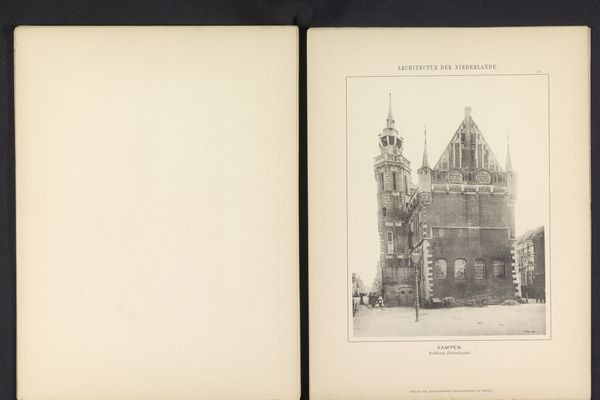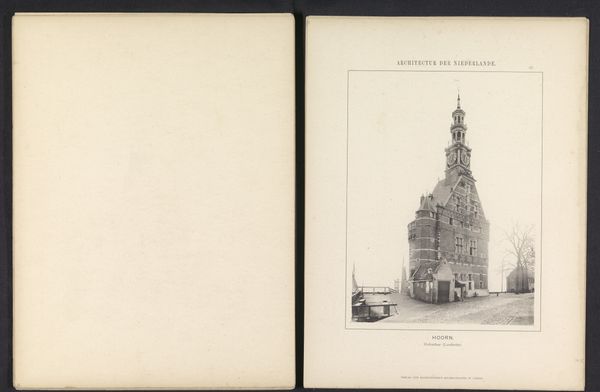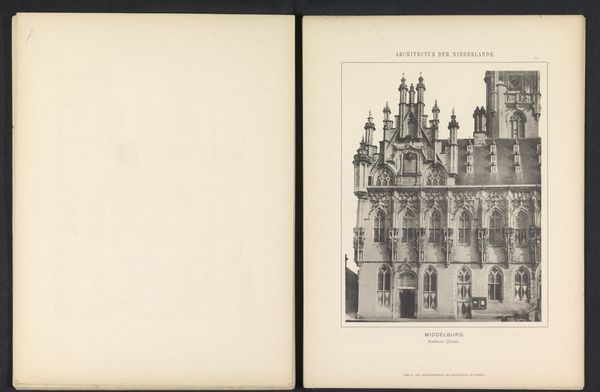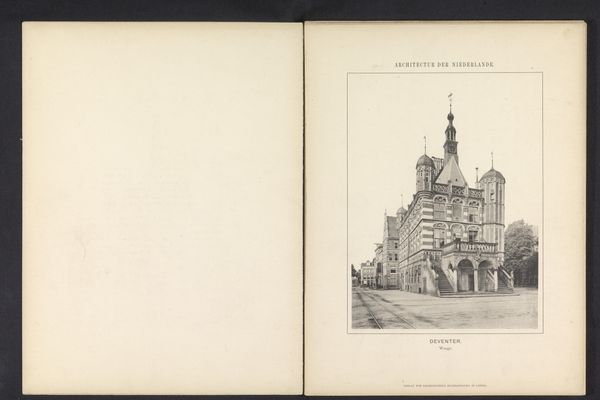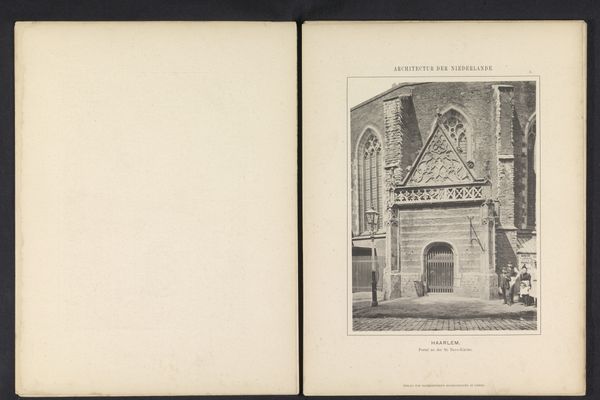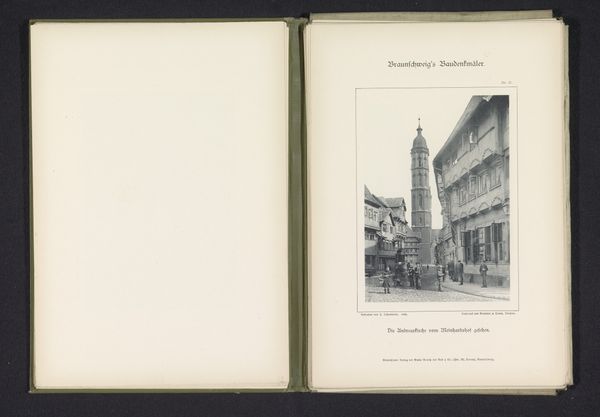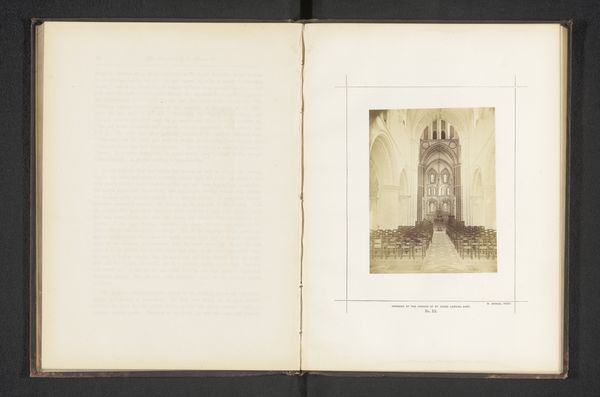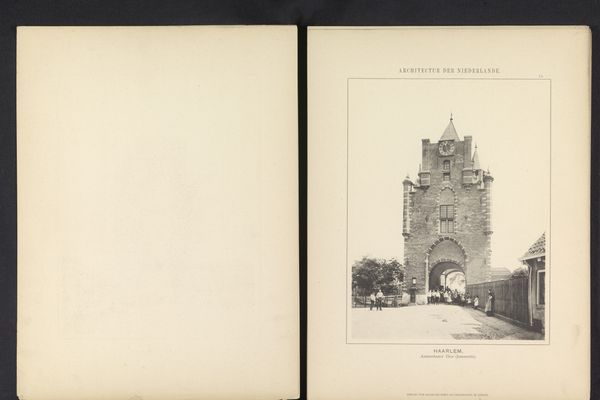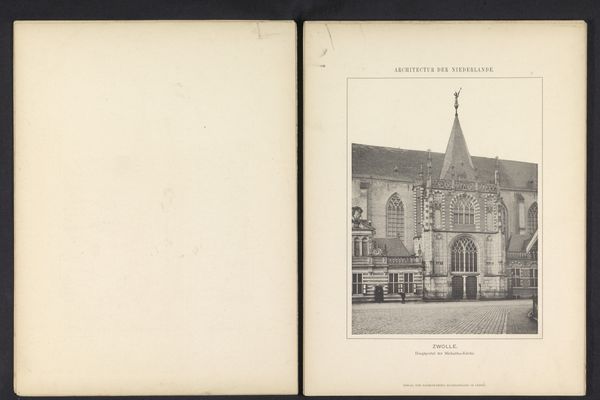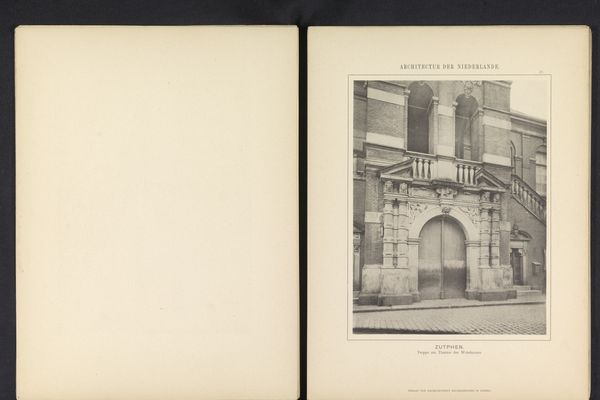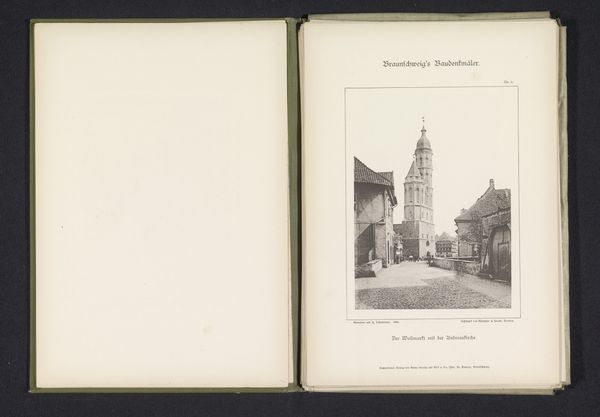
Dimensions: height 255 mm, width 180 mm
Copyright: Rijks Museum: Open Domain
Curator: Looking at this work, entitled "Gezicht op de toren van de Sint-Bavokerk in Haarlem," which roughly translates to "View of the tower of the St. Bavo Church in Haarlem," dating back to before 1894, now held in the Rijksmuseum—it’s incredibly precise. A printed engraving, one would almost assume it's a photograph from first glance, but it seems so still, a quiet record. Editor: There's something undeniably imposing about the architectural detail. It has this starkness, a sort of power statement rooted in classicism, a building asserting the Church's place within the material fabric and societal architecture of Haarlem. It also makes me consider labor, how many hands shaped this monument to belief. Curator: Indeed, the medium, engraving, necessitates a detailed, painstaking process. Each line is carved meticulously, a slow accretion that mirrors the gradual construction of the cathedral itself. Consider too how the printmaking processes facilitated the mass dissemination of architectural imagery and neoclassical ideas. Editor: Absolutely. And thinking about that distribution brings in ideas about power and ideology. These prints made the dominance of the church omnipresent in visual culture, reaching individuals in ways that direct experience might not. The scale might have seemed imposing or conversely diminutive within the frame and thus their societal importance questioned.. Curator: Precisely. The act of creating and consuming such an image speaks to the socio-economic forces at play. Was this aimed at wealthy patrons commissioning buildings? Or at the rising middle class, eager to possess miniature versions of monumental architecture? The original print also alludes to architects from the Netherlands. Editor: It’s intriguing to think about how the production and dissemination of the print serve ideological function in the promotion of Neoclassicism as both the aesthetic embodiment of state and cultural expression of power, serving as the ideal symbol of “Dutch-ness”. Curator: A tangible record of social values manifested through artistry, tools and methods. That's the nexus I find compelling. Editor: Agreed. There is always more to discover beyond the surface of architecture and this view definitely makes you think about who made the buildings and why?
Comments
No comments
Be the first to comment and join the conversation on the ultimate creative platform.
